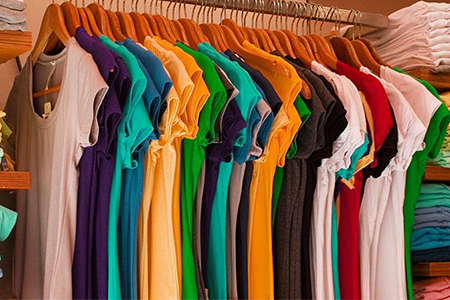
Women’s apparel prices dip in January post sourcing shifts
YarnsandFibers News Bureau 2020-02-19 09:52:45 – USAIn what is normally a big month for clearance sales, retail apparel prices rose a seasonally adjusted 0.7 percent in January compared to December, which is also typically highly promotional, the U.S. Bureau of Labor Statistics (BLS) reported Thursday in its Consumer Price Index (CPI).
But these are not normal times, executives have pointed out, with 7.5 percent tariffs still in place on apparel imports from China after the Phase One trade deal was signed between the U.S. and China on Jan. 15. Expectations that consumers would eventually bear the brunt of these tariffs could be coming true.
The monthly increase was led by a 2.3 percent hike in men’s wear, a 1.8 percent rise in girls’ apparel and a gain of 1.2 percent in infants and toddlers’ clothes, while women’s wear prices inched down 0.1 percent and boys’ apparel sold for 5.8 percent less, BLS reported.
Women’s breakdown
Within women’s, price declines in January were led by outerwear–its seasonality most susceptible to clearance sales–with a 5.5 percent decline compared to December. This was followed by a 2.3 percent decrease in dresses and a 0.7 percent dip in suits and separates.
The only sector that saw a price increase was the underwear, nightwear, swimwear and accessories group with a 3.5 percent hike. The group includes less seasonal basics and lends itself to more price stability.
Stable to depressed fiber prices have helped balance out increased tariff costs. Spot prices for U.S. cotton averaged 62.97 cents per pound for the week ending Feb. 6. This was down from 65.21 the prior week and from 68.68 cents a year earlier, according to the U.S. Department of Agriculture.
The Lenzing Group said last month that prices for basic viscose fiber continued to decline throughout the year and are currently trading at “historically unprecedented low levels.”
Sourcing impact
The cost of merchandise is often effected by where it is produced, and that has been impacted by diversification in global sourcing caused in great part by the tariff-fueled, U.S.-China trade war. Executives have also noted that as companies move their production, they can expect to absorb added costs even if wages are comparable.
“There is often a noticeable difference within a category like jeans of where women’s and men’s are manufactured,” Julia Hughes, president of the U.S. Fashion Industry Association, said. “A lot also has to do with the types of fabrics being used in women’s versus men’s and the quantities required, and which factories are best equipped to make those goods.”
In one of the largest categories–women’s and girls’ jeans–imports to the U.S. saw dramatic swings in 2019. Jeans imports from top supplier China fell 21.2 percent to a value of $511.77 million for the year, while imports from No. 2 Vietnam jumped 34.23 percent to $270.77 million, according to the Commerce Department’s Office of Textiles & Apparel (OTEXA).
Third place Bangladesh saw its imports inch up 0.9 percent last year to reach a value of $233.05 million. Among the rest of the Top 10 suppliers in the category, increases were registered by Pakistan, Cambodia and Sri Lanka, while decreases were posted by Mexico, Egypt, Indonesia and Jordan.
The declines from China weren’t as steep in other major categories, but sourcing shifts were still considerable, according to OTEXA data. In dresses, imports from China decreased 7.98 percent to $1.69 billion in 2019, with second-place Vietnam’s shipments falling 1.79 percent to $751.61 million. Indonesia’s imports were flat at $332.49 million for the year.
Picking up the slack were Top 10 suppliers India, up 11.61 percent to $447.37 million; Italy, increasing 0.71 percent to $124.8 million; Sri Lanka, gaining 5.78 million to $75.18 million, and Turkey, leaping 34.82 percent to $60.41 million. The Philippines, Cambodia and Bangladesh all lost ground.
In skirts, China’s shipments only dipped 1.19 percent to $283.19 million for the year, as imports from Vietnam fell 3.71 percent to $144.03 million. Their next five closest competitors all posted increases for the period.
They were led by a 24.49 percent increase from India to $51.55 million, a 27.97 percent hike from Bangladesh to $46.79 million and a 2.58 percent gain from Indonesia to $46.79 million, while on a smaller scale, Cambodia and Turkey also posted substantial gains.
Bra imports from China declined 6.72 percent in 2019 in value terms to $847.7 million, while the next five top suppliers all posted increases. Vietnam’s shipments rose 5.66 percent for the year to $320.08 million, Sri Lanka’s were up 1.56 percent to $241 million, Indonesia’s increased 10.59 percent to $168.75 million, Thailand’s gained 25 percent to $105.39 million and Bangladesh’s grew 10.94 percent to $88.84 million.
A macro look
Meanwhile, the overall CPI rose 0.1 percent in January on a seasonally adjusted basis, after rising 0.2 percent in December. Over the past 12 months, the CPI increased a non-adjusted 2.5 percent.
The core index–minus the volatile food and energy sectors–rose 0.2 percent in January after increasing 0.1 percent in December. Along with the indexes for shelter and medical care, the indexes for apparel, recreation, education and airline fares all increased in the month. The indexes for used cars and trucks, prescription drugs, motor vehicle insurance, and household furnishings and operations were among those to decline.
The core CPI was up 2.5 percent for the 12 months ending January, the largest 12-month increase since the period ending October 2018.
Source: Sourcing Journal
Market Intelligence
Ask for free sample Report

experience
Customer Base
dedicated team
Countries Served Worldwide









